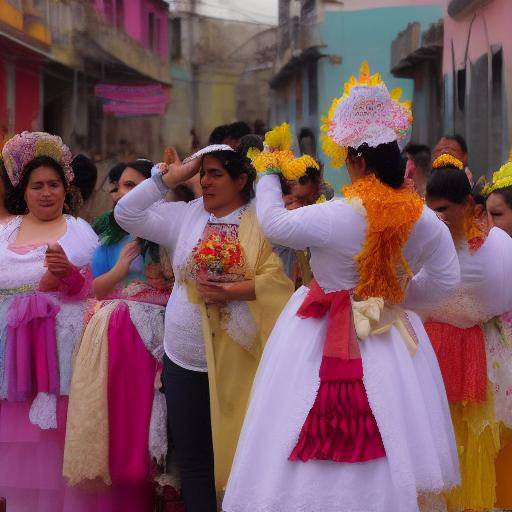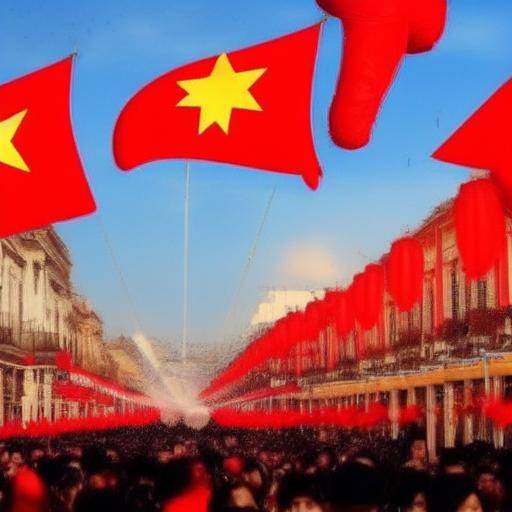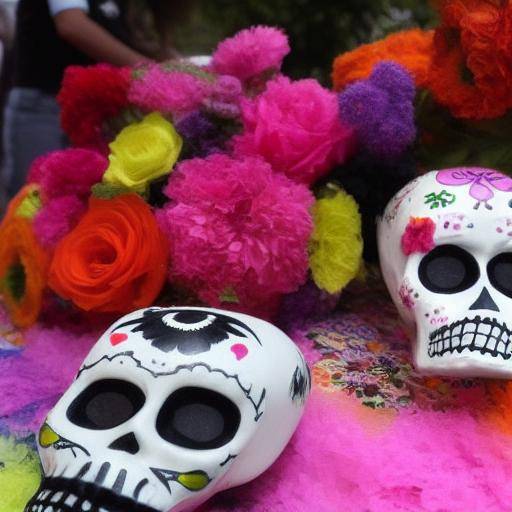
On the day of the Candelaria, a celebration rooted in Mexican culture, is a celebration that combines religious traditions with folkloric and gastronomic manifestations. This holiday, which takes place on February 2, marks the end of the Christmas holidays and the beginning of Lent. In this article, we will explore in detail the history, traditions, and the meaning of the Candelaria Day in Mexico, as well as its relation to winter festivals and how this celebration is enjoyed in the country.
Introduction
The day of the Candelaria, also known as the Feast of Light, is a festival that combines the religious traditions inherited from the colonial period with pre-Hispanic customs, creating a rich amalgam of rituals, music, dance and flavors. This celebration, which takes place 40 days after Christmas, marks the day when the child Jesus is presented in the temple, according to the Bible.
History and Background
The celebration of the Candelaria Day has deep roots in the history of Mexico. This festival is the result of the fusion of different cultures, from pre-Columbian traditions to the Catholic influences of the Spanish colony. The day of the Candelaria is derived from pre-Hispanic holidays that honored the goddess Tlazolteotl, who represented purification and rebirth. These celebrations used to coincide with the beginning of the agricultural cycle.
With the arrival of the Spanish conquerors, the indigenous holidays merged with the Catholic celebration of the presentation of Jesus in the temple and the purification of the Virgin Mary. Today, the day of the Candelaria is a celebration full of symbolisms and meanings that reflect this rich history of cultural mestizaje.
Traditions and Customs
The day of the Candelaria is known for one of the most entrenched traditions in Mexico: the court of the thread of kings. This culinary event, which brings together families and friends, consists of sharing a slice of bread adorned with crystallized fruit and filled with plastic dolls representing the child Jesus. Those who find a doll in their portion should invite tamales on the day of the Candelaria, creating a festive and coexistence environment. This practice is one of the most expected and enjoyed in Mexican celebrations.
In addition, theatrical performances and dances that recreate the presentation of Jesus in the temple are performed at various points of the country. These manifestations, known as "pastorals", combine religious elements with satires and jokes, creating a playful and festive atmosphere. In some places, there are also processions and festivals that highlight the country's cultural and artistic wealth.
Celebration in Mexico and Winter Festivals
The celebration of the Candelaria Day is part of a set of winter holidays that take place in Mexico. These festivities, ranging from Christmas inns to the day of the Candelaria, reflect the importance of coexistence and celebration during the winter season. Mexicans take advantage of this time to meet with their loved ones and share moments of joy and tradition.
Comparison and Synergies with other Winter Festivals
The Candelaria Day holds similarities with other winter holidays in Mexico, such as the Christmas inns. There is a deep connection between these celebrations, as both emphasize the importance of coexistence, solidarity and faith. During the inns, the pilgrimage of Mary and Joseph is recreated in search of a place for the birth of Jesus, while the day of the Candelaria celebrates the presentation of the child in the temple. Both festivities reflect the ronexion between Mexican faith, community and cultural identity.
Conclusion
The Day of Candelaria in Mexico is a festival rich in history, meaning and tradition. This celebration, which combines religious, folkloric and gastronomic elements, reflects the diversity and creativity of the Mexican people. Throughout the centuries, the day of the Candelaria has evolved, merging ancient traditions with colonial influences, and continues to be a vibrant and meaningful celebration for Mexicans. Mexico's diversity and cultural wealth are present in every thread of shared kings, in every shepherd's dance and in every representation of Jesus' presentation in the temple.
Frequently asked questions
1. What is the meaning of the celebration of the Candelaria Day in Mexico?
The celebration of the Candelaria Day in Mexico commemorates the presentation of Jesus in the temple, combining religious, folkloric and gastronomic elements that reflect the country's cultural diversity.
2. What is the origin of the thread of kings in the celebration of the day of the Candelaria?
The tradition of the thread of kings dates back to the colonial era, and the custom of including dolls in the thread represents the flight of the Holy Family to Egypt.
3. What other winter holidays are held in Mexico in addition to the day of the Candelaria?
In Mexico, the Christmas inns, Christmas, the Day of the Holy Innocents and the Day of the Candelaria are part of the winter holidays that unite the communities.
4. What is the importance of winter holidays in Mexican culture?
The winter holidays are moments of strengthening the cultural identity, solidarity and coexistence between Mexican families and communities.
5. How does the celebration of Candelaria's Day relate to Mexican culture?
The celebration of the Candelaria Day highlights Mexico's cultural wealth by combining pre-Hispanic elements with religious and gastronomic influences.
6. How do the feasts of the Candelaria Day take place in the different regions of Mexico?
The celebrations of Candelaria Day vary in different regions of Mexico, presenting a wide variety of traditions, rituals and artistic expressions.
This article provides an integral and meaningful view of the Candelaria Day in Mexico, highlighting the traditions, history and meaning of this festival. It provides a deep understanding of how this celebration relates to winter festivals and highlights the cultural wealth and religious fervor that characterize Mexico.




